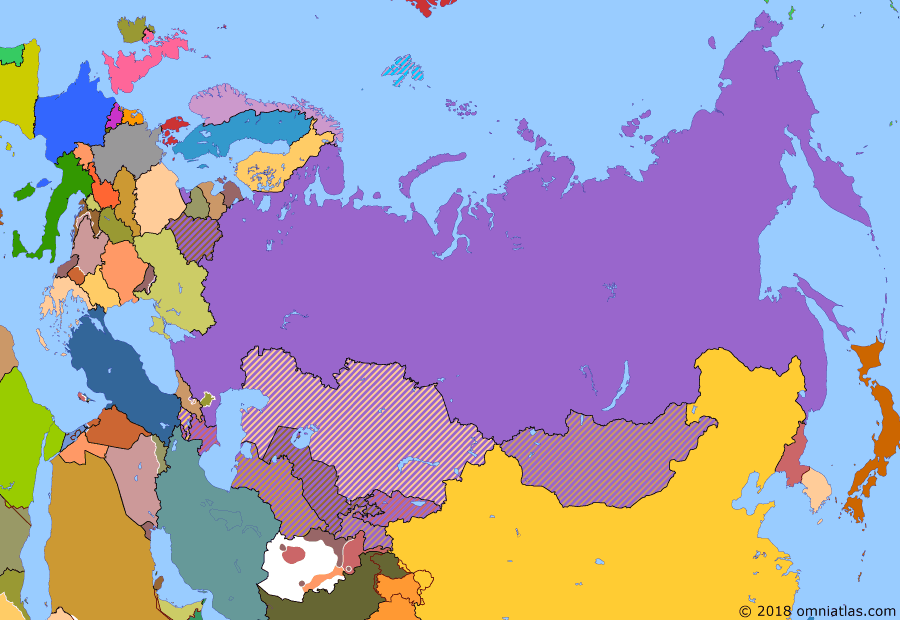Northern Eurasia 1991: Dissolution of the Soviet Union
25 December 1991
25 Dec 1991
Successors of the Soviet Union
1816–1914 Late Tsarist Russia
1914–1918 Great War and the Revolution
1918–1921 Russian Civil War: The White Phase
1921–1927 Russian Civil War: The Green Phase
1927–1941 Soviet Union under Stalin
1941–1943 Great Patriotic War: Germany Invades
1943–1945 Great Patriotic War: Germany at Bay
1945–1991 Soviet Superpower
1991–pres Successors of the Soviet Union
Dissolution of the Soviet Union
6 Sep 1991 Baltic Indepedence
12 Dec 1991 Belavezha Accords
25 Dec 1991 Dissolution of the Soviet Union
4 Oct 1993 Russian Constitutional Crisis
18 Jun 1995 First Chechen War
6 Feb 2000 Second Chechen War
13 Nov 2001 US invasion of Afghanistan
23 Mar 2005 Color Revolutions
7 Aug 2008 South Ossetia War
27 Feb 2014 Crimean Crisis
30 Jun 2014 Donbass Rebellion
30 Sep 2015 Syrian Civil War
9 Nov 2016 Russian Electoral Interventions
22 Mar 2022 Russian invasion of Ukraine
16 Jan 2023 Battle of Bakhmut
24 Jun 2023 Wagner Group rebellion
15 Jan 2024 Northern Eurasia Today
The signing of the Belavezha Accords and secession of Russia ended all hopes of preserving Soviet power. On 25 December 1991, Mikhail Gorbachev resigned as president, officially dissolving the Soviet Union.
